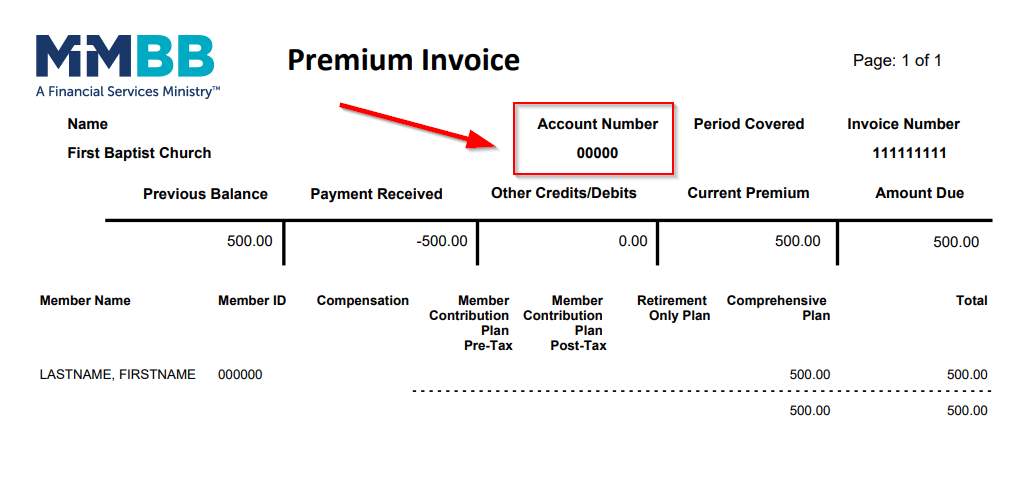The Markets (as of market close May 31, 2023)
The markets in May were marked by ongoing volatility. Inflation, questions over the direction of monetary policy, and slower liquidity growth impacted equities. The ongoing debt ceiling negotiations cast a cloud over financial markets for much of May. Investors worried about the ramifications of inaction as the June 5 deadline loomed. Even after the president and House speaker reached an agreement toward the end of May, concerns persisted over whether Congress would pass the bill to lift the $31.4 trillion U.S. debt ceiling.
Tech shares and artificial intelligence stocks captured the attention of investors in May. One prominent chipmaker in particular saw its market capitalization briefly touch $1 trillion, with its stock up 36.0% in May. The Nasdaq was the clear winner in May among the benchmark indexes listed here, while the S&P 500 was able to eke out a monthly gain. The Dow, the Russell 2000, and the Global Dow finished the month lower. Year to date, the Nasdaq was well ahead of its 2022 closing value, followed by the S&P 500 and the Global Dow. The Dow and the Russell 2000 have fallen below their 2022 year-end values.
Investors saw the Federal Reserve hike the federal funds target rate 25 basis points in May. Whether the Fed raises rates again in June is open to conjecture. Several Fed officials have intimated that a pause may be appropriate, although inflation continues to far exceed the Fed's 2.0% target. The labor market remained tight with the addition of 253,000 new jobs in April, coupled with a rise in the number of job openings, which fueled rate-hike jitters.
In May, there was a clear line between winners and losers among the market sectors. Information technology (10.5%), communication services (6.3%), and consumer discretionary (4.0%) moved higher. The remaining sectors declined, led by energy (-8.9%), utilities (-7.3%), consumer staples (-6.3%), and materials (-6.0%).
Industrial production in general, and manufacturing activity in particular, expanded in May. Durable goods orders increased for the second straight month in April. The purchasing managers' indexes for both manufacturing and services rose in May, with manufacturing exceeding 50.0 for the first time in six months (a reading of 50.0 or higher indicates expansion).
Inflationary indicators showed price pressures remained somewhat elevated. Both the Consumer Price Index and the Personal Consumption Expenditures Price Index rose 0.4% in May.
Bond prices fell lower in May, with yields increasing over the previous month. Ten-year Treasury yields rose 18 basis points from April. The 2-year Treasury yield ended May at 4.42%, up 42 basis points from a month earlier. The dollar advanced against a basket of world currencies. Gold prices ended May lower.
Crude oil prices declined in May marking the fifth monthly decrease in the last six months. Oil prices have fallen due to an unusually warm winter in the United States and Europe, ongoing monetary tightening, U.S. bank failures, and China's slowing economic recovery. The retail price of regular gasoline was $3.656 per gallon on April 24, $0.235 higher than the price a month earlier but $0.451 lower than a year ago.
MARKET SUMMARY
| MARKET/INDEX |
2022 CLOSE |
PRIOR MONTH |
AS OF 05/31 |
MONTHLY CHANGE |
YTD CHANGE |
| DJIA |
33,147.25 |
34,098.16 |
32,908.27 |
-3.49% |
-0.72% |
| NASDAQ |
10,466.48 |
12,226.58 |
12,935.29 |
5.80% |
23.59% |
| S&P 500 |
3,839.50 |
4,169.48 |
4,179.83 |
0.25% |
8.86% |
| RUSSELL 2000 |
1,761.25 |
1,768.99 |
1,749.65 |
-1.09% |
-0.66% |
| GLOBAL DOW |
3,702.71 |
3,984.56 |
3,839.44 |
-3.64% |
3.69% |
| FED. FUNDS |
4.25%-4.50% |
4.75%-5.00% |
5.00%-5.25% |
25 bps |
75 bps |
| 10-YEAR TREASURIES |
3.87%s |
3.45% |
3.63% |
18 bps |
-24 bps |
| US DOLLAR-DXY |
103.48 |
101.67 |
104.23 |
2.52% |
0.72% |
| CRUDE OIL-CL=F |
$80.41 |
$76.73 |
$67.71 |
-11.76% |
-15.79% |
| GOLD-GC=F |
$1,829.70 |
$1,997.90 |
$1,981.20 |
-0.84% |
8.28% |
Chart reflects price changes, not total return. Because it does not include dividends or splits, it should not be used to benchmark performance of specific investments.
Latest Economic Reports
- Employment: Employment rose by 253,000 in April from March compared with an average monthly gain of 290,000 over the prior six months. In April, employment continued to trend upward in professional and business services, health care, leisure and hospitality, and social assistance. The unemployment rate edged down 0.1 percentage point to 3.4%. In April, the number of unemployed persons fell by 182,000 to 5.7 million. The employment population ratio, at 60.4%, and the labor force participation rate, at 62.6%, were unchanged in April from the previous month. Both measures have shown little net change since early 2022. In April, average hourly earnings increased by $0.16 to $33.36. Over the past 12 months ended in April, average hourly earnings rose by 4.4%. The average workweek, at 34.4 hours, was unchanged in April.
- There were 229,000 initial claims for unemployment insurance for the week ended May 20, 2023. The total number of workers receiving unemployment insurance was 1,794,000. By comparison, over the same period last year, there were 215,000 initial claims for unemployment insurance, and the total number of claims paid was 1,432,000.
- FOMC/interest rates: The Federal Open Market Committee raised the federal funds target range rate by 25 basis points in May. The Committee noted that inflation remained elevated, while economic activity expanded at a modest pace in the first quarter. Job gains have been robust, and the unemployment rate remained low. Despite regional bank closures and takeovers, the FOMC statement indicated that the U.S. banking system was sound and resilient. Overall, the FOMC will base its decisions on available data, and "will take into account the cumulative tightening of monetary policy, the lags with which monetary policy affects economic activity and inflation, and economic and financial developments." While future rate hikes are not off the table, the Committee intimated that a pause may be appropriate.
- GDP/budget: Economic growth is slowing, as gross domestic product increased only 1.3% in the first quarter, according to the second estimate from the Bureau of Economic Analysis. GDP rose 2.6% in the fourth quarter. The deceleration in first-quarter GDP compared to the previous quarter primarily reflected downturns in private inventory investment and residential fixed investment. Consumer spending, as measured by personal consumption expenditures, rose 3.8% in the first quarter compared to a 1.0% increase in the fourth quarter. Consumer spending on long lasting durable goods jumped 16.4% in the first quarter after decreasing 1.3% in the prior quarter. Spending on services rose 2.5% (1.6% in the fourth quarter). Nonresidential fixed investment increased 1.4% after climbing 4.0% in the fourth quarter. Residential fixed investment fell 5.4% in the first quarter, significantly better than the 25.1% decrease in the fourth quarter. Exports increased 5.2% in the first quarter, following a decrease of 3.7% in the fourth quarter. Imports, which are a negative in the calculation of GDP, increased 4.0% in the first quarter after declining 5.5% in the previous quarter. Consumer prices increased 4.2% in the first quarter compared to a 3.7% advance in the fourth quarter. Excluding food and energy, consumer prices advanced 5.0% in the first quarter (4.4% in the fourth quarter).
- April is a month that usually sees the federal budget enjoy a surplus, primarily attributable to income tax receipts. This April was no different, as the federal budget had a $176.2 billion surplus, well short of the April 2022 surplus of $308.2 billion. The deficit for the first seven months of fiscal year 2023, at $924.5 billion, is $564.5 billion more than the comparable period of the previous fiscal year. In April, government receipts totaled $638.5 billion and $2.7 trillion for the current fiscal year. Government outlays were $462.3 billion in April and $3.6 trillion through the first seven months of fiscal year 2023. By comparison, receipts in April 2022 were $863.6 billion and $3.0 trillion through the first seven months of the previous fiscal year. Expenditures were $555.4 billion in April 2022 and $3.3 trillion through the comparable period in FY22.
- Inflation/consumer spending: According to the latest Personal Income and Outlays report, the Personal Consumption Expenditures Price Index increased 0.4% in April and 4.4% since April 2022. Prices excluding food and energy also advanced 0.4% in April, following increases of 0.3% in March and 0.4% in February. Prices for goods rose 0.3%, while prices for services increased 0.4% in April. Prices for food dipped 0.1%, while energy prices increased 0.7%. Since April 2022, consumer prices for food increased 6.9%, while energy prices declined 6.3%. Personal income rose 0.4% in April, 0.1 percentage point greater than the March increase. Disposable personal income increased 0.4% in April after advancing 0.3% in March. Consumer spending increased 0.8% in April, after inching up 0.1% in the previous month.
- The Consumer Price Index rose 0.4% in April after increasing 0.1% in March. Over the 12 months ended in April, the CPI advanced 4.9%, down from 5.0% for the year ended in March. Excluding food and energy prices, the CPI rose 0.4% in April and 5.5% over the last 12 months. Contributing to the April CPI advance were increases in prices for shelter (0.4%), used cars and trucks (4.4%), and gasoline (3.0%). In April, food prices were flat for the second straight month, although they're up 7.7% over the last 12 months. For the 12 months ended in April, energy prices decreased 5.1%, while prices for shelter advanced 8.1%.
- Prices that producers received for goods and services increased 0.2% in April, following a 0.4% decline in the previous month. Producer prices increased 2.3% for the 12 months ended in April. The Producer Price Index saw prices for both goods (0.2%) and services (0.3%) increase. Producer prices less foods, energy, and trade services edged up 0.2% in April after increasing 0.1% in the previous month. Prices less foods, energy, and trade services advanced 3.4% for the year ended in April after increasing 3.7% from the 12 months ended in March.
- Housing: Sales of existing homes decreased 3.4% in April. Since April 2022, existing-home sales dropped 23.2%. According to the report from the National Association of Realtors®, job gains, a dearth of inventory, and fluctuating mortgage rates have contributed to the decline in sales of existing homes. The median existing home price was $388,800 in April, up from $375,400 in March but lower than the April 2022 price of $395,500. In April, unsold inventory of existing homes represented a 2.9 month supply at the current sales pace, up from the March pace of 2.6 months. Sales of existing single-family homes dropped 3.5% in April and 22.4% from April 2022. The median existing single-family home price was $393,300 in April, up from the March price of $379,500 but well below the April 2022 price of $401,700.
- New single-family home sales advanced in April, climbing 4.1%, marking the second consecutive monthly increase. Sales were up 11.8% from a year earlier. The median sales price of new single-family houses sold in April was $420,800 ($455,800 in March). The April average sales price was $501,000 ($559,200 in March). The inventory of new single-family homes for sale in April decreased to 7.6 months, down from 7.9 months in March.
- Manufacturing: Industrial production rose 0.5% in April after moving sideways the previous two months. Manufacturing increased 1.0% in April, bolstered by a strong gain in the output of motor vehicles and parts. In April, mining rose 0.6%, while utilities dropped 3.1%, as milder temperatures in April lowered demand for heating. Total industrial production in April was 0.2% above its year-earlier level. Most major market groups recorded growth in April. The production of consumer durables was boosted by an 8.4% jump in the output of automotive products. Elsewhere, there were gains in business equipment (1.2%), defense and space equipment (1.1%), non-energy materials (0.8%), and construction supplies (0.4%). In contrast, nondurable consumer goods, business supplies, and energy materials all posted slight declines in April.
- New orders for durable goods increased 1.1% in April after increasing 3.3% in March. New orders for transportation equipment led the overall increase, advancing 3.7% in April, marking the second consecutive monthly advance. Excluding transportation, new orders decreased 0.2% in April. Excluding defense, new orders fell 0.6%. Over the past 12 months, new orders for durable goods have increased 2.6%.
- Imports and exports: April saw both import and export prices increase. Import prices rose 0.4%, following an 0.8% decline in March. The April increase in import prices was the first since December 2022. Higher fuel prices drove the April increase in import prices. Despite the April increase, prices for imports declined 4.8% over the past year, the largest 12-month drop since the index declined 6.3% for the 12 months ended in May 2020. Import fuel prices increased 4.5% in April, following a 3.9% drop in March. The April increase in import fuel prices was the first monthly advance since June 2022. Nonfuel import prices were unchanged in April after decreasing 0.5% in March. Export prices advanced 0.2% in April, after declining 0.6% in the previous month. Higher prices in April for agricultural exports and nonagricultural exports each contributed to the overall increase. Export prices decreased 5.9% for the year ended in April, the largest 12-month decline since a 6.7% drop for the 12 months ended in May 2020.
- The international trade in goods deficit rose $14.1 billion, or 17.0%, in April over March. Exports of goods for April were $9.5 billion, or 5.5%, below March exports. Imports of goods were $4.5 billion, or 1.8%, more than March imports. The April decrease in exports was attributable to several categories, including other goods (-11.9%), industrial supplies (-9.8%), consumer goods (-7.4%), and foods, feeds, and beverages (-5.2%). The increase in April imports was largely driven by a 6.0% advance in automotive vehicles.
- The latest information on international trade in goods and services, released May 4, was for March and revealed that the goods and services trade deficit was $64.2 billion, a decrease of 9.1% from the February deficit. March exports were $256.2 billion, 2.1% more than February exports. March imports were $320.4 billion, 0.3% below February imports. For the 12 months ended in March, the goods and services deficit decreased 27.6%. Exports increased 8.7%, while imports decreased 1.6%.
- International markets: China's post-pandemic economic recovery showed signs of sputtering in May. Weak factory activity further evidenced China's economic slowdown. Elsewhere, Europe's largest economy has slipped into recession. Germany's economy dropped 0.3% in the first quarter after contracting 0.5% at the end of 2022. In Germany, consumer spending declined, falling 1.2% in the first quarter, as large price increases, particularly for food and energy, slowed personal consumption expenditures. Rising inflation continued to be an issue in Europe in May. However, the European Central Bank slowed the pace of its interest-rate hikes, raising the key rate by 0.25 percentage point to 3.25%, still a near 15-year high. For May, the STOXX Europe 600 Index decreased 2.2%; the United Kingdom's FTSE slid 4.2%; Japan's Nikkei 225 Index gained 5.9%; and China's Shanghai Composite Index dipped 3.6%.
- Consumer confidence: The Conference Board Consumer Confidence Index® decreased in May to 102.3, down from a revised 103.7 in April. The Present Situation Index, based on consumers' assessment of current business and labor market conditions, decreased to 148.6 in May, down from 151.8 in the previous month. The Expectations Index, based on consumers' short-term outlook for income, business, and labor market conditions, fell to 71.5 in May from 71.7 in April. According to the Conference Board's report, the Expectations Index has remained below 80.0, the level associated with a recession within the next year, since February 2022, with the exception of a brief uptick in December 2022.
Eye on the Month Ahead
Inflation and the Federal Reserve are likely to remain at the forefront for investors heading into June. According to the Federal Reserve, which meets in the middle of June, inflation remains accelerated, although another interest rate hike this month is not a certainty.
Data sources: Economic: Based on data from U.S. Bureau of Labor Statistics (unemployment, inflation); U.S. Department of Commerce (GDP, corporate profits, retail sales, housing); S&P/Case-Shiller 20-City Composite Index (home prices); Institute for Supply Management (manufacturing/services). Performance: Based on data reported in WSJ Market Data Center (indexes); U.S. Treasury (Treasury yields); U.S. Energy Information Administration/Bloomberg.com Market Data (oil spot price, WTI, Cushing, OK); http://www.goldprice.org (spot gold/silver); Oanda/FX Street (currency exchange rates). News items are based on reports from multiple commonly available international news sources (i.e. wire services) and are independently verified when necessary with secondary sources such as government agencies, corporate press releases, or trade organizations. All information is based on sources deemed reliable, but no warranty or guarantee is made as to its accuracy or completeness. Neither the information nor any opinion expressed herein constitutes a solicitation for the purchase or sale of any securities, and should not be relied on as financial advice. Past performance is no guarantee of future results. All investing involves risk, including the potential loss of principal, and there can be no guarantee that any investing strategy will be successful.
The Dow Jones Industrial Average (DJIA) is a price-weighted index composed of 30 widely traded blue-chip U.S. common stocks. The S&P 500 is a market-cap weighted index composed of the common stocks of 500 largest, publicly traded companies in leading industries of the U.S. economy. The NASDAQ Composite Index is a market-value weighted index of all common stocks listed on the NASDAQ stock exchange. The Russell 2000 is a market-cap weighted index composed of 2,000 U.S. small-cap common stocks. The Global Dow is an equally weighted index of 150 widely traded blue-chip common stocks worldwide. The U.S. Dollar Index is a geometrically weighted index of the value of the U.S. dollar relative to six foreign currencies. Market indices listed are unmanaged and are not available for direct investment.
IMPORTANT DISCLOSURES
Broadridge Investor Communication Solutions, Inc. does not provide investment, tax, legal, or retirement advice or recommendations. The information presented here is not specific to any individual’s personal circumstances.
To the extent that this material concerns tax matters, it is not intended or written to be used, and cannot be used, by a taxpayer for the purpose of avoiding penalties that may be imposed by law. Each taxpayer should seek independent advice from a tax professional based on his or her individual circumstances.
These materials are provided for general information and educational purposes based upon publicly available information from sources believed to be reliable — we cannot assure the accuracy or completeness of these materials. The information in these materials may change at any time and without notice.








